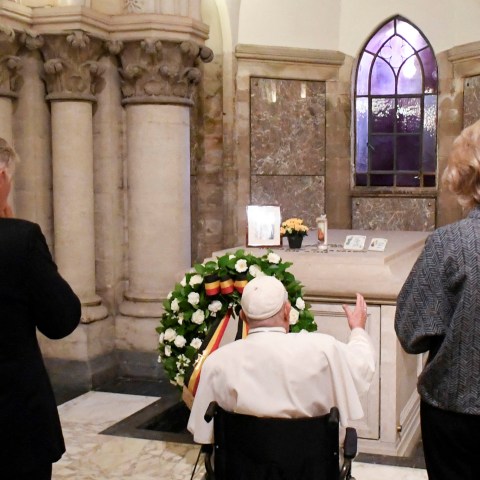When you pray, you don’t feel anything, don’t hear anything, and have nothing to say? Here’s why that’s not a bad thing …Whoever put the odd idea into our heads that something has to happen when we pray? Right from childhood, we start off on the wrong track when well-meaning adults regularly ask us, “Have you finished your prayers?” As though prayer was something to “do.” Other verbs convey a certain image or ideal we have of prayer, such as “feeling,” “hearing,” ” understanding things.” But in reality, those things are rarely experienced.
To be: The right verb to speak of prayer
Prayer can often feel arid, or in any case not always live up to our expectations. We feel let down. That’s when we’re tempted to blame God because, if He really loved us, He would answer our prayers. Or we blame ourselves because, if we really loved God, we ought to be able to get through to Him. If the connection is poor on one end of the line or the other, doesn’t it make more sense just to hang up? So too often, after several attempts, we give up on prayer and concede the battle.
I suggest that the correct verb to use to in speaking of prayer is “to be.” To pray is to be — to be with. That’s what prayer is all about. St. Augustine understood this well when, with sadness and bemusement, he asked: “My God, you who are everywhere, how is it that I find you nowhere?”
“Behold, I am with you always, to the close of the age”
The problem is not the absence of Christ or his distance from human history. As St. John Paul II said, “There’s one problem only that exists always and everywhere: the problem of our being present to Christ.” What is the point of insisting on the real Presence of Christ (in the Eucharist as well as in the other sacraments, in his Church, in fraternal love, in the service of the poor) if we ourselves are not also present?
When Jesus sent his Apostles out bearing the Good News to all nations and all ages, He emphatically stated: “I am with you always, to the close of the age” (Mt 28:20). But “to be with” takes at least two. This is at the very heart of faith as an experience, a living faith: to be with Him, with He who wished to be with us.
Seek God, not sensations
This has implications. It requires us to properly situate the place and meaning of prayer within a Christian life. Prayer is not a goal but a means. The goal is life with Christ; to be able to say along with St. Paul: “For to me to live is Christ” (Phil 1:21); “So, whether you eat or drink, or whatever you do, do all to the glory of God” (1 Cor 10:31). But, to be always with the Lord, we must from time to time “be” for Him alone, to let go of all else for Him, that He may be at the heart of all.
The quality of our prayer is not measured by the number of lovely thoughts or wonderful sensations we derive from it. But by the fact that, in this world we live in, in this moment of our life in which we find ourselves, we dare to open ourselves up to an encounter with God. An encounter of being with Being. The Bible calls it “face to face.” Some spiritual authors say “heart to heart.” The essential? That He find us waiting. Then we’ll have some chance of finding Him too.
Father Alain Bandelier








